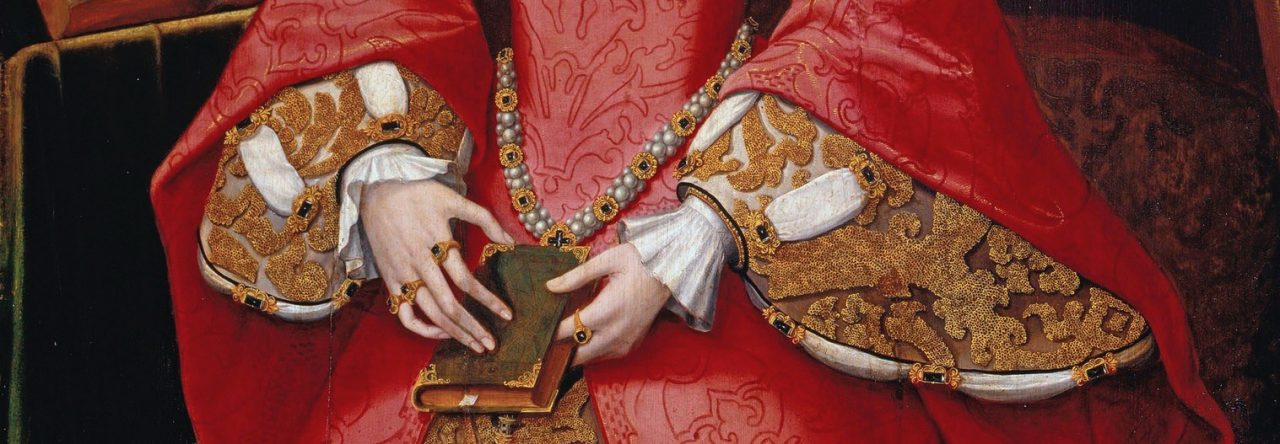
Still in print today, Italian poet Ludovico Ariosto’s epic poem Orlando Furioso has remained one of the most popular works of literature since its first publication in 1516. The poem continued Matteo Maria Boiardo’s unfinished multi-part Orlando Innamorato, which was published in Western printing’s infancy between 1483 and 1495. Its earliest editions are either lost or survive in very few copies.
Orlando Furioso quickly eclipsed the popularity of Boiardo’s work. Ariosto revised the poem at least twice, with a second edition released in 1521 and a posthumous third edition with several additional cantos published in 1532. The work—a chivalric romance that follows the journey of the hero, Roland, after the loss of a love and his sanity—was published in dozens of Italian and Latin editions in the sixteenth century. However, English readers not fluent in either language (a good number of women among them) would have to wait 75 years to read the work in the vernacular.
Courtier John Harington’s translation first appeared in 1591, with a second edition and third edition in 1607 and 1634, respectively. A notoriously lengthy poem, it was published in folio and accompanied by 46 engraved illustrations, which would have initially restricted its readership to those who could afford a copy. Women therefore might not have been able to read the work very widely until secondhand copies began to circulate.

One of these readers was Elizabeth Tyringham. She inscribed a front flyleaf “Elizabeth Tyringham, Her Book {Aprill ye 5[th] 1668;},” which suggests she acquired the book some thirty years after it was originally published.
Genealogical resources reference a number of Elizabeth Tyringhams, but their dates are either too early or too late to be this copy of Orlando Furioso‘s owner. It is possible, if not likely, that Elizabeth was the “only daughter and heiress of the grandson [Sir William Tyringham (d. 1685)] of Sir Anthony [Tyringham]” who “married to John Backwell, Esq.” (d. 1708) in 1678, her new husband succeeding to the Tyringham estate through his marriage to her [1], [2], [3]. The Tyringhams were of Buckinghamshire, but the usual nineteenth-century male-centric genealogies are interested in Elizabeth insofar only as she advanced the family line. She was said to have died “twenty years before” her husband, so in the year 1688 [4].
If she is the same Elizabeth, these scant biographical details tell us nothing about her reading life. Could this have been a volume from the Tyringham family library that she claimed for herself in 1668? Or was it a secondhand acquisition for her personal collection?

The volume is bound in contemporary double-ruled calf, with the gilt lettering and leather at the foot of the spine a later restoration. A remnant of what appears to be a shelf label survives at the head of the spine, although whether this is contemporaneous to Tyringham’s inscription or a later addition is debatable.
What can be said is that Tyringham (if she is the heiress Tyringham) owned the book a decade before she married and was probably young, perhaps in her late teens or early twenties, when she inscribed it. The flourishes in her signature denote care in making the inscription; the date is enclosed by curly brackets and underlined. Though the seller indicates that the copy is clean, an examination of the book’s over 450 pages may yet reveal traces of reading.
Even without a firm identification, it is an interesting example of women’s ownership of canon literature in the late seventeenth century.


Source: Book offered for sale by D&D Galleries in April 2022. Images used with permission.
Bibliography
[1] Sir Bernard Burke. A Genealogical and Heraldic History of the Landed Gentry of Great Britain & Ireland, vol. 1 (London: Harrison & Sons, Pall Mall, 1886), 1873.
[2] James Joseph Sheahan. History and Topography of Buckinghamshire Comprising a General Survey of the County (London: Longman, Green, Longman, and Roberts, 1862), 625.
[3] “History of the Wood.” Hollington Wood. Philip Solt. Accessed April 24, 2022. http://www.hollingtonwood.com/history-of-the-wood/.
[4] George Lipscomb. The History and Antiquities of Buckinghamshire, vol. 4 (London: J&W Robins, 1847), 376.
